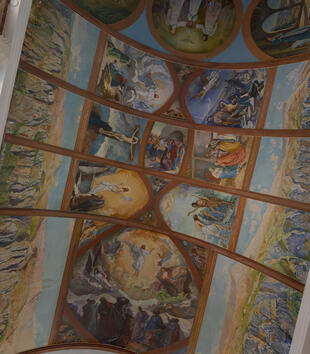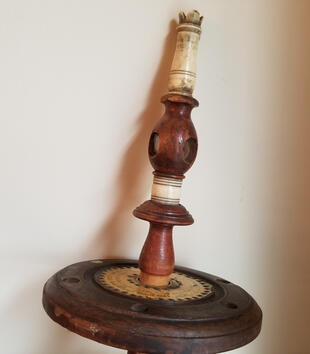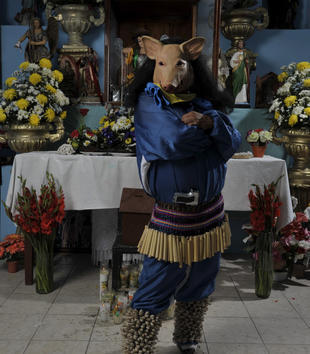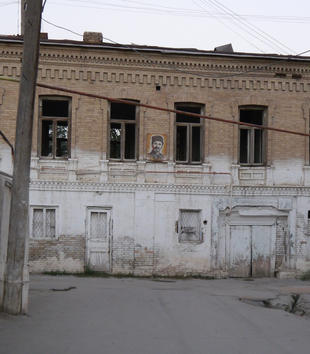You are here
Volume 4: Issue 1
-
Since its construction around the turn of the twentieth century, Our Lady of Diman has served as the summer residence of the Maronite Catholic Patriarch. The prestige of the building is everywhere apparent: in the inlaid marble floor, in the gold and blue panes of the stained-glass windows. The church’s most remarkable feature, however, is the ceiling over its nave, with frescoes completed in the late 1930s by celebrated Lebanese painter Saliba Douaihy (1913-1994).
-
This Ets Chayim, a Tree of Life, is obsolete, redundant, out of time and out of place. It is detached both from the Torah scroll for which it was made, and from its mate that once served that scroll’s other end. It is not supposed to be here anymore—here, that is, in a transformed, glass-sheathed, twenty-first-century Lower East Side, where the traces of immigrant life have been erased, sanitized, and gathered into museums, or commodified as “atmosphere” for an urban playground. Perhaps the act of marking it—noting its persistence beyond obsolescence, shorn of the text to which it was once an auxiliary, bereft of the hands that once grasped it and the congregation that once stood as it was lifted up—is a minor act of resistance in itself.
-
In Judío, photographer Fernando Brito attempts to find an ad-hoc visual representation for the Yoremem or Mayo Indians in his native state of Sinaloa, Mexico. This portrait pays tribute to the foundational value of the community’s ritual, which combines indigenous cosmology with seventeenth-century Jesuit influence, as crucial to its survival and cohesion.
-
Pagiel Leviyev’s house is very sick. Built in Samarkand over a century ago, the structure was designed as a mansion for a wealthy mercantile family. Today, it stands as a crumbling reminder of the Jewish community’s long and complex history in this unexpected spot of the world.



